Cruising in New Zealand means being lucky enough to discover a country of sailors who are passionate about multihulls, as well as, and above all, some incredibly preserved, imposing scenery... A must!
Logbook
If you have seen the ‘Lord of the Rings' trilogy, you already know to what point New Zealand offers sublime scenery. These three films were actually shot in Peter Blake's country, allowing the islands' unparalleled beauty to be promoted: mountain ranges, active volcanoes, wide expanses of beaches, deep fjords and lush forests.
The country is divided into two islands, one in the south, with a temperate climate and the other to the north, with a sub-tropical climate. The islands have preserved an incredibly rich and varied flora and fauna. There are not many countries where lakes, geysers, glaciers, volcanoes, national parks, tropical forests and beaches are mixed together in perfect harmony, as is the case here. Although all New Zealanders (or almost) sail, the most interesting place for a charter cruise is on the east coast of the North Island. Bay of Islands offers a 75 kilometre coastline, sheltered by more than 80 islands, with innumerable possibilities for anchorages, picturesque towns and superb bays. There are a thousand things to do, both ashore and afloat. A cruise in the Bay of Islands is an adventure which will delight even the most blasé crew... And this is why Moorings has set up its base here!
Practical info
Getting there:
Auckland is easily accessible from the world's main capitals. From Europe however, allow over 24 hours travelling time...
Then, from Auckland International Airport to the Bay of Islands, you have the choice of a three and a half hour car journey or a 1-hour internal flight.
Weather:
The warm tropical waters of the South Pacific flow west along the Equator. When the current turns southwards, it produces a semi-tropical oceanic climate, which the Bay of Islands enjoys. The temperate environment stops the summer becoming too hot (from November to April - the seasons are reversed in the southern hemisphere). Spring and autumn are mild and the bay region is renowned for being ‘winter-free'.
The North Island's average temperature varies from 23°C in the summer to 8°C in the winter. One of the special features of the New Zealand climate is its extreme changeableness, in both summer and winter: sun and rain succeed one another often in the space of a few hours. Take a bit of everything in your bag, from a warm waterproof to a bathing costume...
Formalities:
Passport currently valid, and valid for three months after your departure. No visa necessary for citizens of more than 50 countries...
Money:
New Zealand Dollar. All major credit cards are accepted.
1 €=2.10 NZ Dollars
1 £ =2.45 NZ Dollars
1 US$ = 1.49 NZ Dollars
Itinerary
Bay of Islands is one of New Zealand's most beautiful cruising areas, with a 50 mile long area in which you can discover a string of 80 islands, well sheltered from the ocean swell and with easy and enjoyable sailing. Between these mostly uninhabited islands, you will enjoy discovering charming historic villages where you can devote yourself to shopping.
During your cruise, you will certainly be lucky enough to see dolphins, blue penguins, north island robins, jobfish, kingfishers and many other marine and land based species which will captivate both young and old aboard your catamaran...
Here is the itinerary recommended by Moorings, leaving from its Bay of Islands base.
Day 1
Opua to Russell - 4 nautical miles.
Start your Bay of Islands itinerary with a short sail to Russell, originally a Maori village, where the Europeans settled for the first time in New Zealand. The historic town is full of shops and restaurants. Note that three different paths lead to historic sites, for some fascinating walks.
Start your Bay of Islands itinerary with a short sail to Russell, originally a Maori village, where the Europeans settled for the first time in New Zealand. The historic town is full of shops and restaurants. Note that three different paths lead to historic sites, for some fascinating walks.
Day 2
Russell to Moturua Island - 5 nautical miles.
Allow almost a full day for the second stage of your cruise in the Bay of Islands, which takes take you to Roberton Island (Motuarohia Island). The British explorer, James Cook, landed here in 1769, during his first voyage in the South Pacific. It is a small island, about one kilometre long, and is part of the marine reserve. Two lagoons separate the land into three parts. In the lagoons, you will find an underwater trail intended for free divers, and ashore, a beach of white sand, as well as a path leading to a superb panorama of the bay. After the pleasures of Roberton Island, it is time to weigh anchor and set a course for the picturesque Moturua Island (which is also part of the marine reserve) to spend the night. Waipo Bay is a superb place where you can gather fresh mussels for a fabulous feast!
Allow almost a full day for the second stage of your cruise in the Bay of Islands, which takes take you to Roberton Island (Motuarohia Island). The British explorer, James Cook, landed here in 1769, during his first voyage in the South Pacific. It is a small island, about one kilometre long, and is part of the marine reserve. Two lagoons separate the land into three parts. In the lagoons, you will find an underwater trail intended for free divers, and ashore, a beach of white sand, as well as a path leading to a superb panorama of the bay. After the pleasures of Roberton Island, it is time to weigh anchor and set a course for the picturesque Moturua Island (which is also part of the marine reserve) to spend the night. Waipo Bay is a superb place where you can gather fresh mussels for a fabulous feast!
Day 3
Moturua Island to Whangaroa Harbour - 35 nautical miles.
Get up early to enjoy a nice day's sailing. On the way, you can stop on the superb Cavalli Island. You can swim, dive or explore the surrounding area on foot. Then head for Whangaroa Harbour.
Get up early to enjoy a nice day's sailing. On the way, you can stop on the superb Cavalli Island. You can swim, dive or explore the surrounding area on foot. Then head for Whangaroa Harbour.
Day 4
Whangaroa Harbour - Relaxation day - 0 nautical miles.
Whangaroa Harbour is a huge, well-protected haven, with numerous creeks and bays nestling in amongst majestic headlands. In this isolated wildly beautiful paradise, the scenery has remained intact for centuries. Many fascinating places await a stone's throw away, including Rere Bay, with its waterfalls and footpaths.
Whangaroa Harbour is a huge, well-protected haven, with numerous creeks and bays nestling in amongst majestic headlands. In this isolated wildly beautiful paradise, the scenery has remained intact for centuries. Many fascinating places await a stone's throw away, including Rere Bay, with its waterfalls and footpaths.
Day 5
Whangaroa Harbour to the Cavalli Islands - 35 nautical miles.
Heading south, you will reach the Cavalli Islands, where you will find some wonderful anchorages which deserve to be visited in good weather. Horseshoe Bay, situated on the east coast of Big Cavalli is quite busy, as are the footpaths which circle the island and offer an amazing view of the waters bordering the island. This area, and more especially Nukutaunga Island, is ideal for free diving.
Heading south, you will reach the Cavalli Islands, where you will find some wonderful anchorages which deserve to be visited in good weather. Horseshoe Bay, situated on the east coast of Big Cavalli is quite busy, as are the footpaths which circle the island and offer an amazing view of the waters bordering the island. This area, and more especially Nukutaunga Island, is ideal for free diving.
Day 6
Cavalli Islands to Waewaetorea Island - 20 nautical miles.
After a short passage, your cruise in the Bay of Islands takes you to the pretty Waeweatorea Island and its many protected beaches, ideal for swimming. Ashore, you will find the ruins of an old Maori village.
After a short passage, your cruise in the Bay of Islands takes you to the pretty Waeweatorea Island and its many protected beaches, ideal for swimming. Ashore, you will find the ruins of an old Maori village.
Day 7
Waewaetorea Island to Whangamumu Harbour - 11 nautical miles.
Between the historic Cape Brett lighthouse and the steep Percy Island, well known for its Hole in the Rock and Cathedral cave sites, you will spend an unforgettable day. The scenery is breathtaking; you will perhaps see dolphins and little penguins. This place is ideal for fishing. A bit further on, you will find Whangamumu Harbour, a former whale fishing harbour, stuck between the two continents. Taking the dinghy and going ashore to explore the surroundings is a very nice way of spending the afternoon. You will find footpaths leading to the neighbouring waterfalls and a panoramic view.
Between the historic Cape Brett lighthouse and the steep Percy Island, well known for its Hole in the Rock and Cathedral cave sites, you will spend an unforgettable day. The scenery is breathtaking; you will perhaps see dolphins and little penguins. This place is ideal for fishing. A bit further on, you will find Whangamumu Harbour, a former whale fishing harbour, stuck between the two continents. Taking the dinghy and going ashore to explore the surroundings is a very nice way of spending the afternoon. You will find footpaths leading to the neighbouring waterfalls and a panoramic view.
Day 8
Whangamumu Harbour to Oke Bay - 12 nautical miles.
By sailing quickly north around Cape Brett, you will find Oke Bay. You will perhaps be accompanied by dolphins, which add to the wild atmosphere of this coastline, bordered by rectilinear cliffs. On the way, remember to stop at Deep Water Cove for lunch and to admire its artificial reef. Well-protected at the foot of the west side of the headland, Oke Bay is an extraordinary diving spot. Collecting a few fresh mussels for dinner is one of the pleasures the bay offers...
By sailing quickly north around Cape Brett, you will find Oke Bay. You will perhaps be accompanied by dolphins, which add to the wild atmosphere of this coastline, bordered by rectilinear cliffs. On the way, remember to stop at Deep Water Cove for lunch and to admire its artificial reef. Well-protected at the foot of the west side of the headland, Oke Bay is an extraordinary diving spot. Collecting a few fresh mussels for dinner is one of the pleasures the bay offers...
Day 9
Oke Bay to Otehei Bay - 4 nautical miles.
Leave Oke Bay and head for the beautiful Otehei Bay, to the south-west of Bakers Island, famous for the Zane Grey Resort, a tourist complex where you can take advantage of the restaurant, the bar or the beaches, go diving or kayaking, or take one of the many footpaths leading to the archaeological sites...
Leave Oke Bay and head for the beautiful Otehei Bay, to the south-west of Bakers Island, famous for the Zane Grey Resort, a tourist complex where you can take advantage of the restaurant, the bar or the beaches, go diving or kayaking, or take one of the many footpaths leading to the archaeological sites...
Day 10
Otehei Bay to Assassination Cove - 5 nautical miles.
Head for Assassination Cove, where you will find a multitude of pretty, protected bays. Nestling behind the long peninsula of the east coast is Te Hue Bay, more commonly called Assassination Cove. The bay is one of the best protected in the region.
Head for Assassination Cove, where you will find a multitude of pretty, protected bays. Nestling behind the long peninsula of the east coast is Te Hue Bay, more commonly called Assassination Cove. The bay is one of the best protected in the region.
Day 11
From Assassination Cove to Opua - 9 miles.
Even if the idea of returning to life ashore does not fill you with joy (you can always come back to the Bay of Islands!), the final stage of your cruise is a short passage to return to the Moorings base at Opua. It's finished already!!!
Even if the idea of returning to life ashore does not fill you with joy (you can always come back to the Bay of Islands!), the final stage of your cruise is a short passage to return to the Moorings base at Opua. It's finished already!!!
 Vote for your favorite multihulls!
Vote for your favorite multihulls! 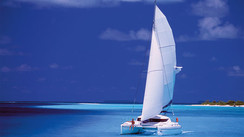
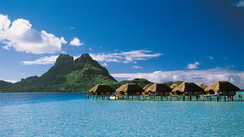
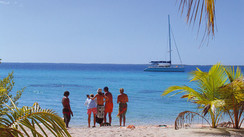
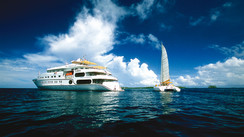
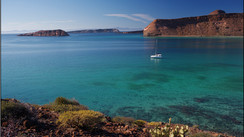

What readers think
Post a comment
No comments to show.